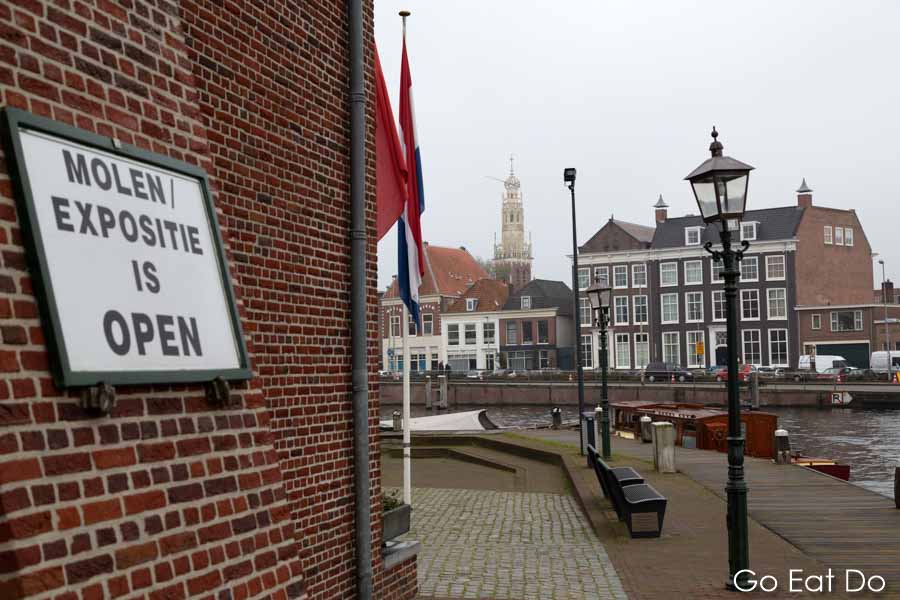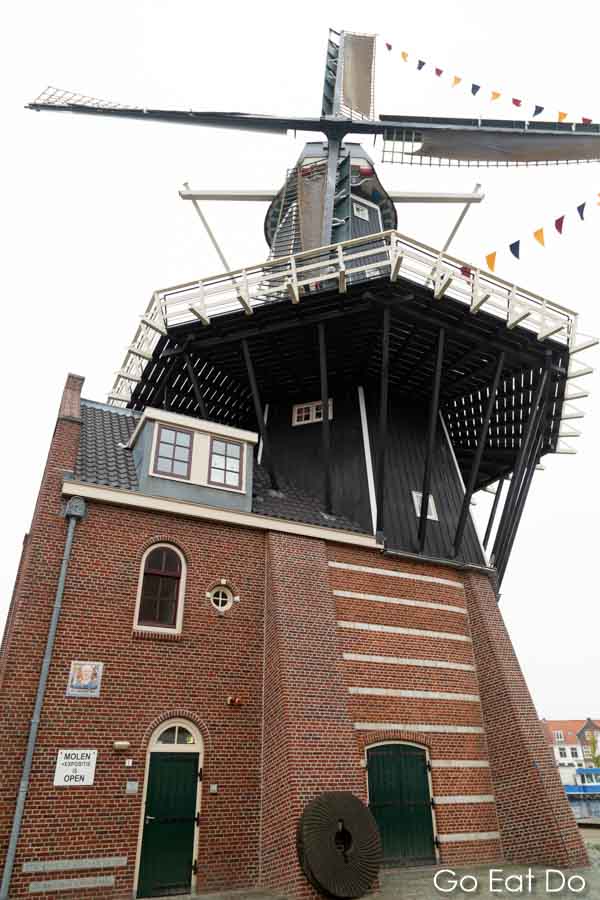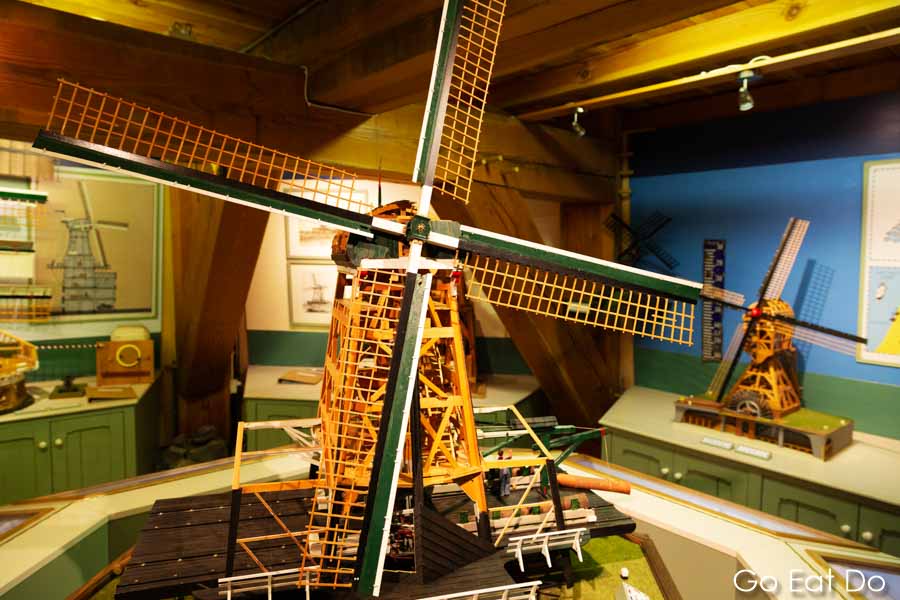What springs to mind when you think of the Netherlands? Stereotypes such as clogs, cheese and windmills? To discover more about the role of windmills in Dutch history, I visited the De Adriaan Windmill for a guided tour while in Haarlem.
Visiting the city of Haarlem
The city of Haarlem is approximately 19 kilometres west of Amsterdam. It takes just 15 minutes to reach Haarlem on one of the intercity trains running from the Dutch capital’s central station. The De Adriaan Windmill is about 10 minutes’ walk from Haarlem’s railway station.
If you like insider tips, it’s worth remembering that if you are ever struggling to find reasonably priced accommodation in Amsterdam it can prove worthwhile looking for a hotel in Haarlem as an alternative.
During the mid-19th century, more than 15,000 windmills existed across the Netherlands. Haarlem was once dotted with more than 100 windmills. Just eight of the city’s mills now exist, including the restored De Adriaan Windmill.
The urban landmark stands by the River Spaarne. Even if you’re not into history and heritage taking a tour of the windmill is worthwhile for the elevated views. Its wooden platform, 12.7 metres above ground level, provides outstanding perspectives across the waterway and into the centre of Haarlem.

Tours of the De Adriaan Windmill
I joined a tour led by Jelle, one of the 60 volunteers who help maintain and operate the windmill. The tour lasted about 45 minutes. It would have been around half an hour if I hadn’t been asking so many questions about the functions of the mill.
Long before Facebook and smartphones were used to send group messages, millers could apply their windmill’s brake to stop the sails in positions that conveyed to onlookers whether the family had something to celebrate or mourn. The positions of the sails could, among other messages, also show if the miller was taking a long or short rest.
Built on a defensive tower
The mill was constructed upon the remains of a tower, the Goê Vrouwtoren, that once formed part of Haarlem’s defences. A bridge once linked the Goê Vrouwtoren to another tower, the Zanderstoren, on the far side of the Spaarne.
Over time, as artillery became increasingly powerful, those defences were rendered ineffective, so the towers subsequently fell into disuse.
A businessman from Amsterdam, Adriaan de Boois, saw the site as ideal for erecting a windmill and in 1778 was granted permission to do so.

De Adriaan through time
The mill that bears De Boois’s Christian name was originally used to crush tuff stone that was used for making a type of waterproof mortar. Business, though, did not prove great. Consequently, the original owner also used his mill to grind pigments to make dyes and the bark of oak trees for use in tanneries.
In 1802 the mill changed ownership. For more than six decades, the sails provided the power to grind tobacco into snuff. It was only in 1865, when a steam-driven mill was added, that the site began milling grain.
After climbing the ladder-like wooden staircases that lead to the upper levels of the windmill, I looked on and observed as grain was milled while machinery clunked and drive shafts whirred and turned.
The demise of the windmill
In time steam and wind power fell out of favour as electrical machinery became affordable. In 1920 De Adriaan’s steam engine was replaced by electricity.
To conserve an important aspect of the country’s heritage, the Dutch Windmill Association was formed. In 1925 the association took ownership of the De Adriaan Windmill.
A winter storm, late in 1930, wind ripped one of the sails from the mill. On 23 April 1932, the mill was destroyed by a fire. A vast crowd gathered and watched as the flames took a grip of De Adriaan and reduced its wooden structure to ash.

Rising from the ashes
In 1991 the Foundation Molen de Adriaan was established with the objective of rebuilding the windmill. Fortunately, five years later, a pledge — made by the municipality in 1963 to rebuild the landmark — was discovered in the city’s archives.
That find proved a catalyst for gaining support to finance the reconstruction. The work would cost 1.3 million euros.
The reconstruction of the 7.5-metre high brickwork structure at the base of the mill was started in 1999. The official reopening of De Adriaan was on 23 April 2002 — 70 years after the blaze that destroyed the original structure.
A feat of engineering
Jelle explained how the sails have a span of more than 24 metres and can turn at speeds of up to 70 kilometres an hour. It wasn’t until I stood next to the sails that I could appreciate their vastness. They reach 37 metres into the air.
While we were on the wooden deck looking up at the sails he explained how the wooden structure, which weighs approximately 30 tonnes, sits on top of the brickwork base and can be rotated to face the wind.
In addition to seeing how grain was milled, displays and models in the attraction provide insights about how windmills across the Netherlands were used to pump and drain water from the countryside. Known as ‘polder mills’, such windmills helped reclaim land for purposes such as agriculture. Others windmills were used to saw wood.
The steep staircases within the wooden structure mean that taking a tour of the De Adriaan Windmill will not be for everybody. However, a short video, shown in the accessible lower section of the mill, provides an overview of the history and context of the landmark.

Further information
See the De Adriaan Windmill website for information about opening times and ticket prices.
For more about things to do and see in Haarlem, take a look at the Visit Haarlem and Holland websites.
Stuart Forster, the author of this post, was named Travel Writer of the Decade at the Netherlands Press Awards of 2020. He is available for commissions and can be contacted via this website.
The photographs illustrating this post are by Why Eye Photography.
If you enjoyed this post why not sign up for the free Go Eat Do newsletter? It’s a hassle-free way of getting links to posts on a monthly basis.
‘Like’ the Go Eat Do Facebook page to see more photos and content.


